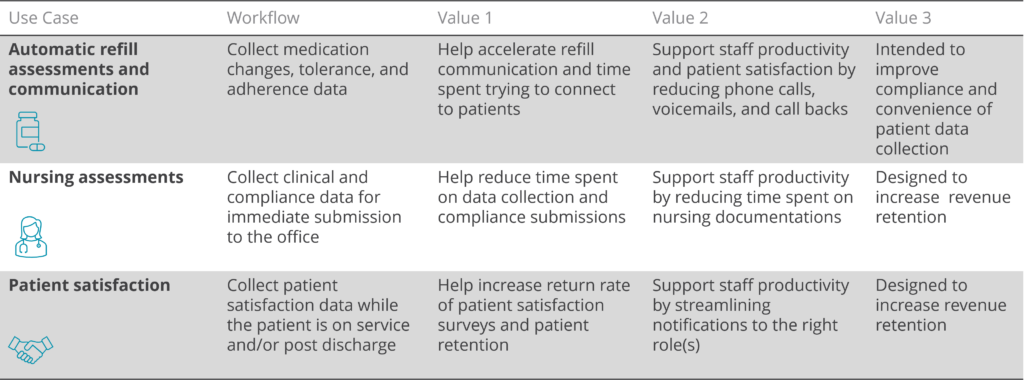Melissa Kozak
Feb 1 2023
Reading Time: 4 minutes
By: Melissa Kozak, RN, BSN, President & Co-Founder, CitusHealth
Data collection is vital for day-to-day business operations. Optimizing how that data is collected and integrated is one way you can increase your operational efficiency and scale your business. Logic-driven forms allow providers to customize their communication with patients to allow for instant data collection and help ensure compliance measures are met.
Provider benefits of electronic data collection and accessibility include:
Below are workflows being used by providers today to capture important data. In this blog, we’ll dive into each of these workflows and explore how they can streamline operations and expedite billing.

Automatic refill assessments and communication
This workflow collects medication changes, tolerance, and adherence data, which helps accelerate medication authorizations and change order requests. Collecting data using this method can improve staff productivity and patient satisfaction by helping to reduce or even eliminate, the number of phone calls, voicemails, and call-backs needed. It can also improve compliance and the convenience of patient data collection.
Nursing assessments
This impactful workflow uses logic-driven forms to collect clinical and compliance data that can be quickly sent to the office. It can help reduce the time spent on collecting data and increase compliance on submissions — helping to improve staff productivity by minimizing their time on administrative tasks and increase revenue retention.
Patient satisfaction
Logic-driven forms collect patient satisfaction data while the patient is on service and/or post discharge. It helps increase the return rate of the patient satisfaction surveys and improves patient retention by keeping them engaged and satisfied during their service of care. It also streamlines the notification process to the right role(s), which ultimately improves staff productivity and efficiency.
When you keep in touch with patients and caregivers, and address any concerns they have, they are most satisfied with services which feeds back to your referral sources. This can lead to increased revenue through repeat business.
Electronic signatures: Driving accessibility to data beyond logic-driven forms
Another way to streamline documentation, drive accessibility to data, and expedite billing is through electronic signatures. Sending documents digitally offers a more efficient way to collect signatures electronically through a mobile app, secure text message link, or email. This helps reduce delays of obtaining signatures due to the provider or patient misplacing the document, paperwork getting lost or delayed in the mail, or manual administrative errors when scanning and attaching signed documents to patient records.
The benefits to the provider are impactful and include:
Below are some workflows that are being used by providers today to capture electronic signatures.

Admission paperwork
Collecting electronic signatures on admissions documents prior to a patient’s first visit reduces the time spent by staff and patients in the office. This helps improve staff productivity and increases patient satisfaction and retention, as well as helps increase compliance with care and billing requirements.
Delivery confirmations
Collecting electronic signatures to confirm deliveries allows for contactless delivery, which has gained immense popularity due to COVID-19. It improves staff productivity by helping to reduce the amount of time spent obtaining signatures, scanning those into the computer, filing the paperwork, and attaching to patient records. It can also help increase revenue retention and compliance with billing requirements.
These are just a few of the ways CitusHealth provides digital tools for driving data accessibility. Schedule a demo today to learn how the right technology can take your data collection and optimization strategies to the next level.